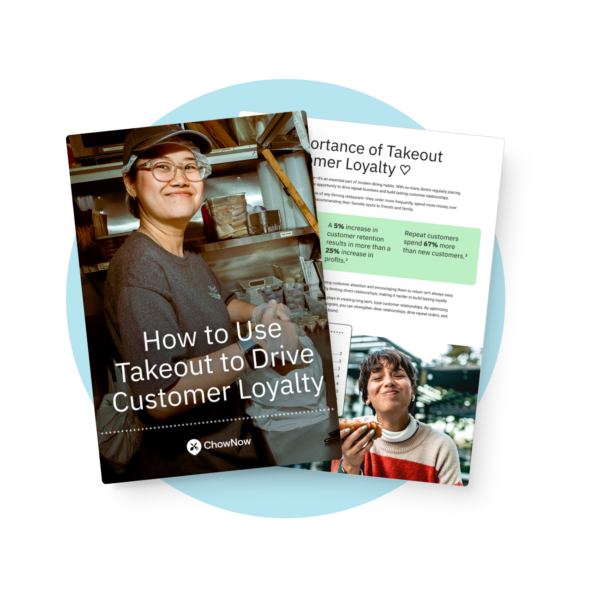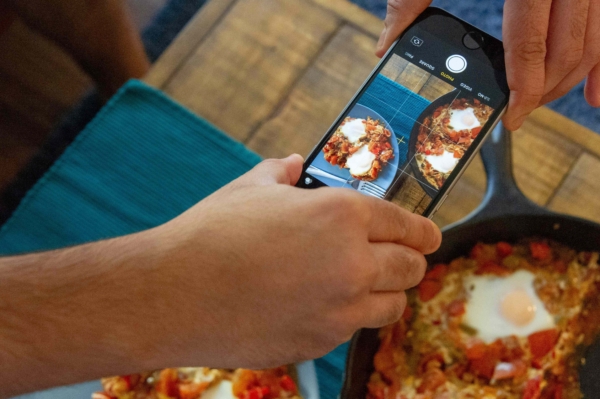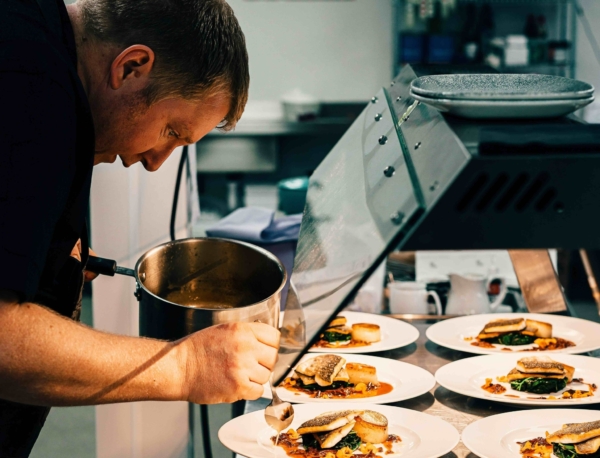Menu Updates: Signs It’s Time to Refresh Your Restaurant’s Offerings

Even your most reliable menu items can lose their shine over time.
Dining habits change, food costs fluctuate, and customer preferences can shift depending on what’s trending.
All of these things are ok, so long as you’re menu is evolving with the changes.
Menus aren’t meant to stay static, and not adjusting to the ebbs and flows of business could be damaging your bottom line, and many times, you might not ever realize it’s happening.
The problem is that many restaurant operators don’t always pick up on the signs that it’s time for a menu update.
The clues are subtle at first: a dip in orders here, a negative note in a review there. But together they add up.
In this article, you’ll learn:
- How to spot the signs that your menu needs an update
- What declining sales and diner behavior say about your menu items
- How to make changes without losing loyal customers
Your Best Sellers Aren’t What They Used To Be
Every restaurant has experienced this: a menu item that used to fly out of the kitchen every shift suddenly loses its popularity.
The reason why this happens can vary, but it’s usually one of these three scenarios:
- Regular customers are tired of ordering the same menu items and want to try something new.
- A shift in dining trends.
- Nearby competitors are offering something similar, but at a more affordable price or with a fresher angle.
A sudden drop in what was once a customer favorite can signal a dish being out of sync with what customers want, or you need a long-overdue menu update.
That doesn’t mean you need to completely dismantle your entire menu or cut all your classics.
However, it could indicate that it’s time to rework your plating, adjust the portion size, pair it with a new side or drink, or relocate it to a different section of the menu.
To learn what’s happening, your first step is to dig into your POS data to confirm the drop-off in sales. You want to make choices based on hard data, not gut feelings.
Next, compare the last 90 days to the same time period last year.
If your former popular menu item has slipped out of your top 10 sellers and isn’t driving margins, it’s probably worth rethinking.
Another thing to consider is that the problem might not be the dish itself—it could be that the cost of producing it to stay on the menu no longer makes sense.
That’s when it’s time to take a closer look at your food costs and how they’re impacting your bottom line.
Food Costs Are Eating Into Your Margins
Everyone is aware of rising food costs, but many restaurants haven’t adjusted their menu item prices to reflect the increase.
If you haven’t kept a close eye on your costs, dishes that once had decent margins might now only break even, or worse, cost you money with every order. And it’s not always obvious until you dig into the details.
You might have dishes that, on paper, aren’t expensive, but generate too much waste or require specialty ingredients that are difficult to sync with a different distributor.
Waiting on a single product to execute a dish can become extremely expensive if supply chain issues prevent it from ever reaching your restaurant, forcing you to find different outlets for the rest of the ingredients.
And it’s not just about the food itself. Prep-heavy dishes that require more time and labor chip away at your profit from another angle.
If your team is spending 15 minutes to prep a dish that only gets ordered twice a day, that’s not a valid part of your menu payload.
To fix it, start by pulling ingredient-level price reports and menu item sales data.
Where are your margins thinnest?
Which menu items are generating complaints about portion size, consistency, or price? Even just trimming or reworking a few low-margin items can make a noticeable difference.
The goal isn’t to make your menu smaller, it’s to make it smarter.
Your Staff Struggles to Execute the Menu
If your kitchen feels like it’s constantly in the weeds, your menu might be part of the problem.
If you’re consistently seeing:
- Long ticket times
- Inconsistent plates
- Customer complaints
- Stressed-out cooks
It isn’t necessarily a staffing issue; it could be a sign that the menu payload is too much for your BOH team to handle.
An overly complicated menu can slow everything down, making service harder for your staff and less reliable for your customers.
Every additional item, modifier, or cooking method makes it more challenging to execute. Multiply that across a shift, and even a solid team can start missing beats.
Ask your team what’s working and what isn’t, then make adjustments that can simplify the workflow without sacrificing what makes your menu great.
By cutting dishes that are hard to execute or rarely ordered, you make life easier for your team and improve the overall experience for guests.
Online Reviews Mention the Menu (and not in a good way)
When guests leave negative reviews, it’s rarely about the menu specifically, but when they do, pay attention.
Complaints about outdated offerings, limited variety, or confusing layout suggest your menu isn’t meeting your diners’ expectations.
You might also see frustration from customers who tried to order an item they saw online but couldn’t find in person.
That kind of gap between what diners expect and what’s actually on the menu breaks trust and often leads to a negative online review.
It’s easy to dismiss one or two negative comments, but when the reviews keep mentioning the same issues, it’s a signal to update your menu.
Think of negative online reviews as a menu audit tool.
Check for patterns, like:
- Are people commenting on missing menu items?
- Is there confusion about pricing?
- Are customers unclear about modifiers?
People are telling you, in real time, what’s working and what’s not, and listening to that feedback is free market research.
That’s input you can act on.
Guests Are Confused or Overwhelmed by Your Menu
If your servers keep getting the same questions about what comes with a dish or if diners are taking too long to decide, your menu either has a confusing layout or is so large it’s overwhelming.
Too many categories, unclear modifiers, or redundant choices can cause what psychologists call the “paradox of choice”: the more options people have, the harder it is to make a decision.
In fact, 79% of Americans have a difficult time choosing what to order.
When faced with too many choices, people will freeze up and default to something they don’t want, or worse, not pick anything at all.
The result is slower-moving lines or table turns, and a less satisfying experience for everyone involved.
A well-thought-out menu update makes it significantly easier for customers to make a choice.
That might mean simplifying your layout, grouping similar items, or dropping underperforming dishes that only add to the confusion.
Clarifying your menu makes it easier to read, faster to order from, and more in tune with how your customers actually make their dining choices.
For more information on how to improve your menu, read our article Menu Engineering Techniques to Maximize Your Profits.
Your Concept Has Evolved—but Your Menu Hasn’t
Perhaps you’ve rebranded your website, transitioned to counter service, or introduced direct online ordering to meet a new wave of customer demands; whatever the case, if your menu remains outdated, it can create a disconnect with diners.
This can show up in subtle but costly ways:
- Dishes that made sense for plated service fall apart in a delivery bag
- Portions or plating don’t match your customers’ new expectations
- Your branding looks modern, but your menu items feel dated or stuck in a different era
Fixing this might mean removing dishes that no longer fit your format, adjusting modifiers for takeout, or creating new items that reflect how your customers now eat.
A concept shift without a menu update doesn’t just confuse diners, it slows down your team, leads to unnecessary waste, and dulls the impact of the experience you’ve worked hard to refresh.
How to Update Your Menu (Without Losing Loyal Diners)
Updating your menu doesn’t have to mean starting from scratch; it just means being intentional about what stays, what goes, and what needs a second look.
Start With a Menu Audit
Before you make changes, look at the data.
Pull sales reports from your POS, scan your recent online reviews, and ask your staff what menu items guests are skipping, modifying, or asking about.
This gives you a grounded view of what’s actually working and what’s ready to go.
Involve Your Team
The people who cook and serve your menu every day are your best resource.
Line cooks know which dishes slow down the kitchen. Servers know which items confuse diners.
Bring them into the process early, so they help create updates, not just adapt to them later.
Test Before You Commit
Not every menu update needs to be permanent from day one.
Use LTOs, daily specials, or seasonal items to test what lands. Watch sales, track portion waste, and ask for honest feedback from regulars.
Let your customers help shape what stays and what doesn’t.
Communicate the Changes
Don’t let loyal diners feel blindsided. Post about the updates on your restaurant website, social media, and in-store signage.
Train your staff with a few quick talking points so they can explain what’s new and why it’s worth trying. Emphasize that these changes are exciting and good for everyone.
Frequently Asked Questions on Updating Menus
How often should I update my menu?
There’s no one-size-fits-all schedule, but most restaurants benefit from a menu update at least once or twice a year. That’s often enough to stay relevant without confusing regulars. You can also run smaller updates seasonally or monthly by rotating specials or limited-time menu items.
What’s the easiest way to test a new dish?
Start with a special. It gives you a low-risk way to test pricing, portion size, prep time, and how well it sells. Watch what gets ordered, what comes back to the kitchen, and what customers say, then use that feedback to refine before making it permanent.
Do I need to reprint my menu every time I make a change?
Not necessarily. If you’re running a few tests or rotating a dish in and out, you can use inserts, chalkboards, or daily printouts. For digital menus, be sure to sync your changes across all platforms, especially your restaurant website and online ordering channels.
How can I make online updates easier?
Use a system that makes it simple to update, post, and manage your menu items across platforms. Order aggregation allow you to push updates directly to your direct online ordering and delivery platforms from one dashboard.
Updating Your Menu Keeps Your Restaurant Moving Forward
Don’t let an outdated menu hold back your restaurant when it’s otherwise growing in all the right ways. Updating your menu ensures it evolves alongside your brand, dining trends, and customer expectations.
Contact ChowNow to learn how Order aggregation and Direct Online Ordering make menu updates fast and simple.






